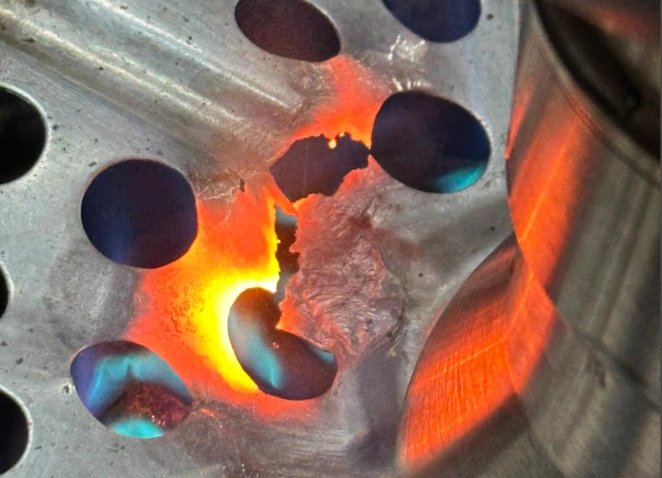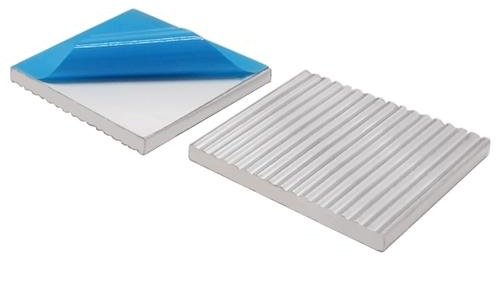Ever wonder why your smartphone doesn’t melt during video calls or how gaming consoles survive marathon sessions? The answer lies in an unsung hero of modern tech: thermal management systems. These silent guardians protect sensitive electronics from self-destruction by redirecting dangerous energy buildup.
At the core of this process are specialized components designed to transfer excess warmth into the surrounding environment. Their effectiveness hinges on two critical factors: material choice and structural design. One metal dominates this field due to its unique balance of affordability and performance characteristics.
Modern manufacturing techniques shape this material into intricate geometries featuring thin protruding elements. These formations dramatically increase surface exposure, accelerating heat exchange with air or liquid coolants. From processors in data centers to electric vehicle power modules, these components prove indispensable across industries.
While their appearance might suggest simplicity, production demands surgical precision. Even minor imperfections in shape or spacing can reduce cooling efficiency by over 30%, according to recent MIT studies. This explains why leading tech companies invest heavily in refining their fabrication methods.
This exploration will reveal both time-tested approaches and cutting-edge innovations shaping next-generation thermal solutions. Discover how engineering choices made during production directly impact your devices’ reliability and lifespan.
Understanding Aluminum Heat Sink Basics
Every electronic breakthrough depends on managing invisible thermal threats. Components that redirect excess energy prevent catastrophic failures in everything from medical equipment to satellite systems. These thermal regulators combine strategic geometry with advanced metallurgy to balance cost and capability.
The Role of Heat Sinks in Thermal Management
Effective thermal control systems rely on two critical elements: a flat base and protruding fins. The base makes direct contact with heat-generating parts, while fins multiply surface exposure to cooling air. Proper spacing between fins maximizes airflow without sacrificing structural integrity.
Design quality directly impacts temperature regulation. Research shows optimized fin arrays improve cooling capacity by 40% compared to basic designs. This efficiency determines whether processors maintain peak performance or throttle speeds during heavy workloads.
Key Materials and Their Thermal Properties
Material selection dictates heat transfer rates and product longevity. Engineers prioritize metals with high conductivity-to-weight ratios for modern device requirements. Consider these industry-standard options:
| Property | Aluminum | Copper |
|---|---|---|
| Thermal Conductivity | 235 W/mK | 401 W/mK |
| Relative Cost | $2.50/kg | $8.20/kg |
| Weight Density | 2.7 g/cm³ | 8.96 g/cm³ |
| Common Applications | Consumer electronics | High-power servers |
Copper outperforms other metals in pure conductivity but adds substantial weight. Aluminum provides adequate cooling for most applications at 65% lower mass. Advanced manufacturing processes now combine both metals in hybrid designs for optimal thermal management.
How are aluminum heat sinks made: Manufacturing Techniques and Processes
Production methods shape thermal solutions from concept to reality. Each approach balances precision, efficiency, and structural complexity to meet specific cooling demands. Manufacturers select techniques based on performance targets, budget constraints, and application environments.
Extrusion: The Primary Method
Extruded heat sinks dominate the market due to rapid production speeds. Aluminum billets heated to 400°C-500°C get forced through custom dies. This creates continuous profiles later cut into individual units.
Secondary operations like CNC milling add mounting holes or surface textures. Extrusion suits high-volume orders but limits fin thickness to 1.5mm minimum. Roughly 70% of commercial thermal components use this method.
Exploring Alternative Methods
Casting enables intricate shapes through molten metal injection into molds. Stamped heat sinks use hydraulic presses to form sheet metal rapidly – ideal for lightweight consumer electronics.
CNC machining carves solid blocks into bespoke geometries. While costly, this subtractive process achieves tolerances under 0.1mm for aerospace applications.
| Method | Cost | Speed | Fin Density |
|---|---|---|---|
| Extrusion | $ | Fast | Medium |
| Skiving | $$$ | Slow | High |
| 3D Printing | $$$$ | Variable | Custom |
Innovative Approaches
Skiving technology slices thin fins from metal blocks, achieving 4x higher density than extrusion. Additive manufacturing builds layered structures impossible through traditional methods.
3D-printed heat sinks optimize airflow paths using algorithmic design. These advanced techniques address rising thermal loads in compact devices like VR headsets and 5G transmitters.
Optimizing Design, Materials, and Airflow for Superior Performance
Precision engineering transforms ordinary components into thermal powerhouses. Cutting-edge designs now focus on three critical elements: fin architecture, material quality, and airflow dynamics. These factors collectively determine whether a cooling system succeeds or fails under operational stress.
Engineering Cool: Fin Geometry & Airflow Synergy
Fin design directly impacts surface exposure and cooling potential. Optimal spacing between protrusions allows air to flow freely while maximizing contact with warm surfaces. Studies show staggered fin layouts improve heat dissipation by 18% compared to uniform patterns.
| Fin Design | Airflow Efficiency | Surface Area Increase |
|---|---|---|
| Straight | Baseline | 0% |
| Pin | +12% | 22% |
| Wave | +9% | 31% |
Forced convection systems benefit from tighter fin spacing, while natural airflow requires wider gaps. High-quality extrusion processes ensure consistent thermal conductivity across stamped components. This precision prevents “hot spots” that degrade electronics.
Secure Connections for Maximum Transfer
Attachment methods influence heat flow from source to cooling structure. Spring-loaded clips maintain pressure during thermal expansion, outperforming basic adhesives by 27% in stability tests. Thermal tapes offer quick installation but suit only low-power devices.
| Method | Conductivity | Best For |
|---|---|---|
| Epoxy | 3.5 W/mK | Permanent installations |
| Phase Change Material | 6.8 W/mK | High-vibration environments |
Hybrid systems combining copper bases with extruded aluminum fins reduce weight while maintaining thermal performance. Proper integration of these elements can slash thermal resistance by 40%, extending device lifespans significantly.
Conclusion
Behind every high-performance device lies a meticulously crafted cooling system. The manufacturing process determines whether these components succeed or fail, with extrusion remaining the backbone of mass production. Advanced methods like skiving and 3D printing now push boundaries, enabling ultra-dense fin arrays that maximize passive heat dissipation.
Material combinations prove equally vital. Hybrid copper-aluminum designs balance conductivity with weight savings, while optimized fin geometry directs flow patterns for peak efficiency. Engineers must match techniques to applications – extrusion suits consumer electronics, while CNC machining serves aerospace-grade demands.
Future innovations will hinge on smarter surface designs and sustainable production methods. As devices shrink and power densities rise, next-gen thermal solutions must evolve. Choosing the right approach today ensures tomorrow’s tech remains cool under pressure.






